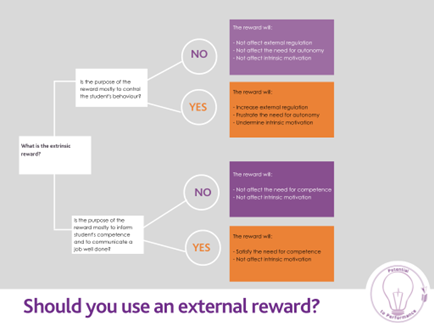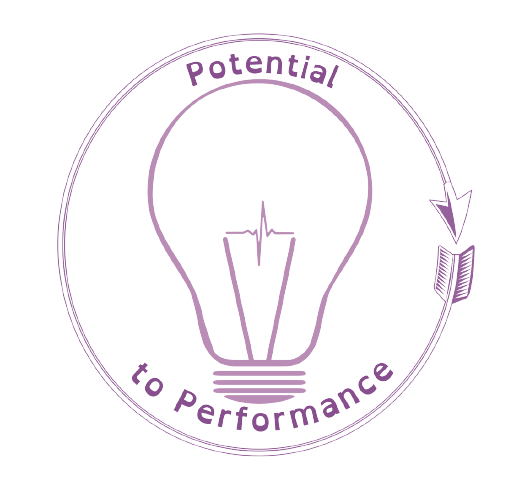The effect of using external rewards on students’ intrinsic motivation
This piece was originally submitted as a Position Paper for a post-graduate paper at Massey University in 2010.
Introduction
“I think the big mistake in schools is trying to teach children anything, and by using fear as the basic motivation. Fear of getting failing grades, fear of not staying with your class, etc. Interest can produce learning on a scale compared to fear as a nuclear explosion to a firecracker.”
Stanley Kubric
American director, Stanley Kubric, has a point when he compares the effect of interest being a nuclear explosion and fear being only a firecracker. As teachers, we want our students to be as motivated as possible – we want to create that nuclear explosion. However, when students find our subject ‘boring’ and are unmotivated in our classes, we, as teachers, frequently turn to two options – punitive consequences (fear) or external rewards. But are these rewards actually improving the intrinsic motivation of our students or are we creating an environment where our students will only work when the carrot is on the end of the stick?
In many of my classes, I have used a tangible external reward (chocolates, stickers, home baking… even free cake decorating lessons) and watched my unmotivated students suddenly come to life. Work is completed, quietly and competently. It may not be a ‘nuclear explosion’ but it certainly is a small camp fire. But, like the camp fire, this motivation quickly runs out of fuel and I am left having to find greater rewards to entice my students into learning. Maybe, instead of a nuclear explosion or a camp fire, we need to find a way to create a continuous, steady gas flame in our students – running on a gas bottle that they fill themselves. Reeve (1996, as cited in Reeve, 2006, p.645) states “students possess a repertoire of inner motivational resources that are fully capable of energizing and sustaining their classroom engagement – with or without the support of extrinsic rewards”. They can fill the gas bottle themselves.

Motivation of students
Everything that we do in life comes down to motivation. Tony Robbins (2010), a motivational speaker, talks about how humans are motivated by avoiding pain and receiving pleasure. As adults, we often do unpleasant things if the alternative is something more unpleasant. For example, someone who hates running will go running solely so that they feel comfortable in a bikini at a friend’s pool party. There is a goal that we are motivated to achieve and our success or lack of success is soon apparent. However, in the case of learning this is not always the case as our students often cannot see the benefit making an effort to do or learn what we want them to for a long term gain. (Harlen, 2006). Many students struggle to be motivated in schools and secondary school tasks and activities are often not designed to be intrinsically motivating for students (Brophy, 2010; Ryan & Deci, 2000).
Ryan and Deci (2000, as cited in Alderman, 2008; Alexander, 2006) identify three types of motivation: ‘intrinsic’ where the motivation comes from within the student; ‘extrinsic’ where the motivation comes from external sources; and ‘amotivation’ which is similar to learned helplessness and the student sees no connection between their own actions and the outcome of events. This position paper will focus on external rewards and their effect on students’ intrinsic motivation.

Behaviourist and cognitive theories of using rewards
Two theories that can outline the effect of using rewards upon behaviour are behaviourist theory and cognitive theory. Behaviourist theory developed from Thorndike’s and Skinner’s understandings of the law of effect. They believe that by giving a reward each time an appropriate action or behaviour is given within a stimulus that action or behaviour is reinforced. Each time the reward is given the stimulus-response association is increased (Mayer, 2008). This does not require any involvement from the learner and is often a technique used in training animals, for example performing seals at Seaworld.
While cognitive theory is also based on the law of effect, it has an alternative interpretation where learner is involved. Here the learner is required to think about (metacognition) the feedback that they receive and relate it to how to their own response. Feedback, therefore, is used by the learner to help them develop and plan appropriate responses (Mayer, 2008). Cognitive evaluation theory suggests that competence and self determination are the keys to intrinsic motivation (Deci, Koestner, & Ryan, 2001). Intrinsic motivation is increased when students have an internal perceived locus of causality (they are competent and self determined) whereas it is decreased when they have an external perceived locus of causality like being given rewards or imposed deadlines (Deci, et al., 2001).
Intrinsic motivation
Intrinsic motivation can be defined as happening when students perform an activity where they feel competent and in control. These are basic human needs and when they are met, students find activities interesting and complete them for the sole reason of completing the activity rather than for an extrinsic purpose (Lepper & Henderlong, 2000; Ryan & Deci, 2000; Sansone & Harackiewicz, 2000). Ryan and Deci (2000, as cited in Alderman, 2008, p.252) state that “intrinsic motivation is typically defined as students engaging in actions for their own sake rather and without coercion such as satisfaction, as a sense of competence, interest, learning and challenge.” Lepper and Hodell (1989, as cited in Schunk, Pintrich, & Meece, 2008, p.236) believed that there are four sources of intrinsic motivation: “challenge, curiosity, control and fantasy.” Ormrod (2006, as cited in Riggs & Gholar, 2009, p.14) stated that “intrinsic motivation is personal inspiration”. Intrinsic motivation is also contextual in that as students grow and develop, their interests will change and develop with them (Schunk, et al., 2008) and in a classroom situation it is “based on the notion that learning can be interesting, enjoyable and fun” (Reeve, Ryan, Deci & Jang, 2008, p.233).

External rewards and extrinsic motivation
External rewards are often used to motivate students extrinsically. These rewards come from ‘outside’ of the student often in the form of “praise, grades, special privileges, certificates or material rewards” (Alderman, 2008). Reeve (2006) identifies that teachers give out awards before a task is issued in order to get a certain behaviour, during the task to continue the behaviour or as a consequence of the behaviour occurring.
Bull and Solity (1987, as cited in Capel & Gervis, 2009, p.132) categorised rewards into four types. These are listed in the order that teachers most often use them:
- social rewards (social contact and pleasant interactions with other people, including praise, a smile to recognise an action or achievement or to say thank you, encouraging remarks or a gesture of approval)
- token rewards (house points, grades, certificates)
- activity rewards (opportunities for enjoyable activities)
- material rewards (tangible, usable or edible items)
External rewards often appear to be effective in that students do what you wish them to do, however, this result is often superficial. The teacher does get compliance but the student is not engaged in their learning (National Council of Research Institute of Medicine, 2004). While researches do admit that external rewards are sometimes the only effective strategy for some students, they state that external rewards should be used “cautiously and no more than necessary” (National Council of Research Institute of Medicine, 2004, p.41) as their short term positive effect could undermine the student’s attitude to school and learning over the course of their education (National Council of Research Institute of Medicine, 2004).
Some studies have shown that external rewards can often diminish “self-motivation, curiosity, interest, and persistence at learning tasks” (Deci, et al., 2001, p.1). However, Cameron and Pierce’s (1994, p.397, as cited in Deci, et al., 2001, p.1-2) studies suggest that intrinsic motivation is unaffected by the use of external rewards and stated that “teachers have no reason to resist implementing incentive systems in the classroom” and Covington (2000, p.23) states that rewards do increase learning when tasks are perceived as a “chore” or “boring”.

Negative effects of external rewards on intrinsic motivation
Task contingent rewards often have a negative effect on intrinsic motivation. These can be defined as working on tasks regardless on performance or completion, participation certificates, goals or deadlines that have been imposed, social evaluation or critique, someone watching or avoidance of something unpleasant. (Schunk, et al., 2008) Task contingent rewards can be seen as being controlling and have a more negative effect on intrinsic motivation than non-contingent rewards (Muraven, Rosman & Gagne, 2007). Task contingent rewards are often used to control the student’s behaviour rather than assist their learning or increase their intrinsic motivation. It creates an external locus of causality where the student will only complete their activity if a reward is offered. This overpowers any previous intrinsic motivation (Stipek, 2002) as they no longer feel autonomous and the feeling of being controlled prohibits any deep engagement in the activity (National Council of Research Institute of Medicine, 2004).
As many as 100 studies (Stipek, 2002) have shown that when students are engaged in an activity and are intrinsically motivated, the offer of an extrinsic reward will actually lower their intrinsic motivation (Deci, Koestner, & Ryan, 1999; Lepper & Greene, 1978; Lepper & Henderlong, 2000, all cited in Schunk, et al., 2008; Cameron & Pierce, 1994; Deci & Ryan, 1985; Kohn, 1993; Tang & Hall, 1995, all cited in Stipek, 2002). Loss of motivation can be seen in studies where students are already intrinsically motivated and then lose this motivation when they are given an external reward (Covington, 2000). This relates to the over-justification hypothesis which derived from cognitive dissonance theory and was put forward by Lepper, Green and Nisbit (1973, as cited by Covington, 2000 and
Schunk, et al., 2008). In this hypothesis, it is believed that students lose their desire to do a task or an activity if they link the value of the activity to an extrinsic reason. When the extrinsic reason is removed, students are no longer motivated to do the task or activity based solely on their previous desire (Schunk, et al., 2008).
The external reward of verbal praise can also have negative effects. Students respond differently to praise and some students may see public praise in front of their peers as a form of punishment (Capel & Gervis, 2009) or ‘shameful’, especially if they appear condescending in nature (Brophy, 2010). If the praise is given automatically without being linked to performance, effort or behaviour, “students quickly see through it and it loses its effect” (Capel & Gervis, 2009). Hattie and Timperley (2007, p.84) state that a negative effect can be had if a teacher praises saying “that student has performed as they should have performed”.
Performance contingent rewards were also seen to have a negative effect on intrinsic motivation when they are linked to competition against other students, for example being in the top 20% (Ryan & Deci, 2000). Students who constantly ask “is it in the examination?” (Harlen, 2008) or “do we get credits for this?” are students that are no longer intrinsically motivated in their learning but rather see the grade or the credits as their extrinsic reward (Harlen, 2008). These students are less likely to engage in activities where it is for the sake of learning rather than gaining the external reward.

Positive effects of external rewards on intrinsic motivation
Rewards can have a positive effect on intrinsic motivation if they are given linked to specific feedback on the student’s performance or progress (Schunk, et al., 2008). For example, a student receives a chocolate fish with the comment “you deserve this treat today because even though you found that math problem difficult, you kept on persevering to find and use the right formula. That perseverance meant that you found the right formula and you were able to solve that difficult math problem yourself. Well done!” A comment, like the example, which is based on performance information, helps students to feel “efficacious” and “experience self determination” (Eisenberger, Rhoades, & Cameron, 1999, as cited in Schunk, et al. 2008, p.238).
Mayer (2008) states that it is not the reward itself that creates a positive effect; rather it is the student’s interpretation of the reward. For example, if a student receives an unexpected reward for something that they enjoy doing, then they may interpret that as being recognition of their achievement. Similarly, if a student is rewarded for accomplishing something difficult or challenging, as in the feedback example, then this can result in an increase of their intrinsic motivation (Mayer, 2008). Deci, Koestner, and Ryan (2001) agree that while tangible rewards can be seen as controlling, they are not likely to result in a decrease in intrinsic motivation if they are unexpected. Positive effects in self efficacy and skill development were also found by Schunk (1983b, as cited in Alderman, 2008) when they were based upon the quality of the task outcome. These positive effects were not found when rewards were given for task completion or participation (Alderman, 2008). Ryan and Deci (2000) state that performance rewards can increase intrinsic motivation when there is enough information to affirm the student’s competency.
Eisenberger, Pierce and Cameron (1999) argue that the use of external rewards can have negative, neutral or positive effects on intrinsic motivation and that they can in fact increase a student’s sense of self determination. They believe that it can increase the sense of self determination because the offering of a reward emphasises that the task giver has little control over the task performer (Eisenberger, et al., 1999). The task performer has the option of rejecting the task, and therefore the reward, so they still have autonomous power and should not feel controlled (Eisenberger, et al., 1999).
Co-existence of intrinsic and extrinsic motivation
Harlen (2008) points out that rewards can provide either extrinsic or intrinsic motivation. For example, a student could work hard at an activity in order to be praised (an extrinsic reason for doing it) or they could work hard because they enjoy it and then receive praise which in turn strengthens their intrinsic motivation. Hidi (2000) agrees that some actions could be considered intrinsically and extrinsically motivating. For example, a student is reading a book before bed because a) he enjoys the book (intrinsic) and b) it was set for homework (extrinsic).
Intrinsic and extrinsic motivation can co-exist (Convington & Mueller, 2001; Lepper, Corpus, & Iyenger, 2005, as cited in Alderman, 2008) and Alderman (2008) believes that this is best represented on a continuum from least extrinsic to most extrinsic. Students move up the continuum based on how much they determine their own actions (Alderman, 2008). This continuum is separated into four areas, from more controlling to most autonomous (Alderman, 2008):
- External regulation: The student is motivated by rewards or punishment.
- Introjected regulation: The student is motivated by what is expected of them but they do not internalise the motivation.
- Identified regulation: The student wants to achieve their goals and therefore accepts regulation.
- Integrated regulation: The student is self-determined. She integrates and internalizes the values and roles.
Alderman (2008) states that people may complete tasks and activities for both intrinsic and extrinsic reasons at the same time.

My position on the use of external rewards in the classroom
It is important to distinguish the difference between using rewards as a motivation to learn or as a motivation to perform (Absolum, 2006). As teachers, our primary goal is to create lifelong learners who are confident, connected and actively involved (Ministry of Education, 2007). To me, there is a big difference between lifelong learners and students who perform for an external reward. Therefore, my position on using rewards in the classroom is based on improving student learning motivation. Brophy (2004, as cited in Absolum, 2006, p.137) defines the difference between learning motivation and performance motivation.
“Learning refers to the information processing, sense making, and advances in comprehension or mastery that occur when one is acquiring knowledge or skill; performance refers to the demonstration of that knowledge or skill after it has been acquired… stimulating students’ motivation to learn includes encouraging them to use thoughtful information-processing and skill-building strategies when they are learning. This is quite different from merely offering them incentives for good performance later.”
As teachers, we need to promote meaningful learning rather than performance. By ensuring that we use techniques to increase intrinsic motivation, we are creating students who have the skills and the motivation necessary to face challenges that arise before them (Mayer, 2008). Students that work toward mastery, exploration and appreciation often use more effective learning strategies and are more engaged in tasks than students who are working solely towards performance (Covington, 2000).
Csikszentmihalyi (1983, 1985, as cited in Alexander, 2006) wrote about a theory of optimal experience (also known as ‘flow’) which he described as “a deep sense of enjoyment that is long cherished and that becomes a landmark in memory for what life should be like” (Csikszentmihalyi, 1990, p.3, as cited in Alexander, 2006, p.204). When students are ‘in flow’ they are “deeply engrossed in a stimulating experience” and therefore would need not the external stimulus of a reward. For students to achieve ‘flow’ activities must be important to them, be challenging, be within the student’s zone of proximinal development and when they have finished the student needs to feel a sense of achievement (Alexander, 2006). When students are in a state of ‘flow’ then they are that slow gas flame that was mentioned in the introduction of this position paper.
My position is that external rewards should be used sparingly in the classroom. Our focus should be on creating interesting learning activities that encourage the students to engage in ‘flow’. To help facilitate this, teachers should allow an open dialogue and exchange of ideas in the classroom (Vavilis & Vavilis, 2004) to help students build intrinsic motivation.
We should connect the learning with students’ lives, align it with their prior knowledge, and focus on stimulating their interest within a respectful learning environment (Aitken & Sinnema, 2008). Brophy (2010, p.136) stated “The key to rewarding effectively is to do so in ways that support students’ motivation to learn and do not encourage them to conclude that they engage in activities only to earn rewards.”
Deci, Koestner, and Ryan (1999, as cited in Hidi, 2000, p. 325) made three major conclusions regarding the use of rewards and my position on the use of external rewards in the classroom has been influenced by these three conclusions.
- Most tangible rewards were found to significantly undermine the free-choice behavioural measure of intrinsic motivation for interesting activities, but performance-contingent rewards did not undermine self-reported interest. In addition, unexpected rewards and those that were not contingent on task behaviour had no undermining effect on either of the two measures.
- Verbal rewards (i.e. positive feedback) had a significant positive effect on intrinsic motivation, although the results were stronger for college students than for children.
- On the basis of their supplementary meta-analysis, Deci et al. concluded that tangible rewards did not undermine intrinsic motivation of people engaged in uninteresting activities.
Tangible rewards
My position on tangible rewards is that they should not be given for participation or completion of a task or activity. Tangible rewards should be given unexpectedly to students who meet the prescribed standard rather than those who “beat” other students in competitive situations. The rewards should be given with specific attributions to the students’ improved competency and should only be used in routine tasks where there is not a high level of inherent interest.
Verbal rewards
My position on praise as a verbal reward is that it should always be genuine, specific and linked to the accomplishments of the student. A variety of phrases should be used and these should not include exclamations or rhetorical questions which could be read as being condescending. All verbal praise should be accompanied by nonverbal communication of approval such as a smile and eye contact.
Cognitive evaluation theory states that rewards can have two purposes: “to elicit a desired behaviour (control behaviour) and to affirm achievement (inform competence)” (Reeve, 2006, p.652). Before use external rewards, we should work through the following graphic representation of cognitive evaluation theory (as cited in Reeve, 2006, p.653, figure 24.2).

Conclusion
American football coach, Lou Holtz, once said “It is not my job to motivate players. They bring extraordinary motivation to our program. It is my job not to de-motivate them.” The same can be said for teachers and their students. When we use rewards in the classroom we have to be certain that it is for instigating a long term positive effect on intrinsic motivation rather than the short term. If we go back to the nuclear explosion to a firecracker analogy, both of these are transient. They do not last. If we can foster intrinsic motivation through selective use of external rewards and encompassing other motivational strategies (for example, scaffolding, promoting mastery, effective feedback, supporting autonomy…) then we can teach our students to not only fill the gas bottle but also light the flame. They then have autonomy over this fire within them for life. They will be lifelong learners.
